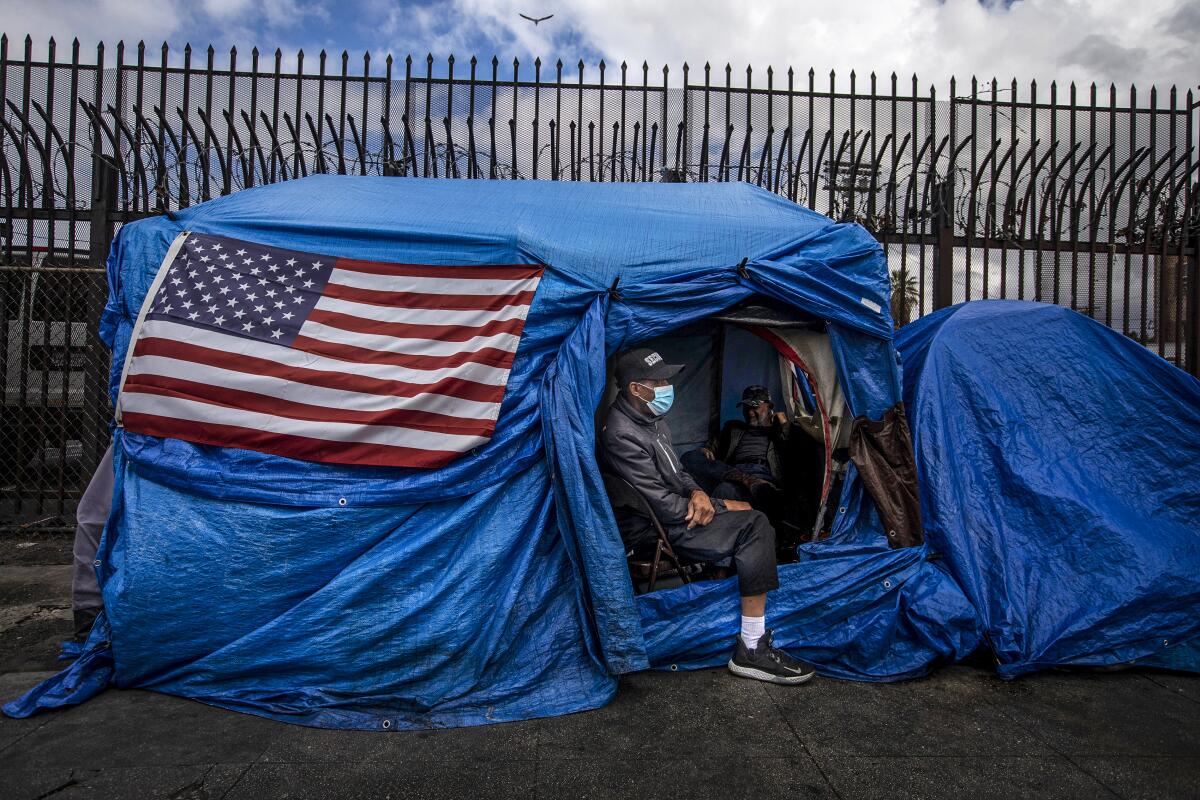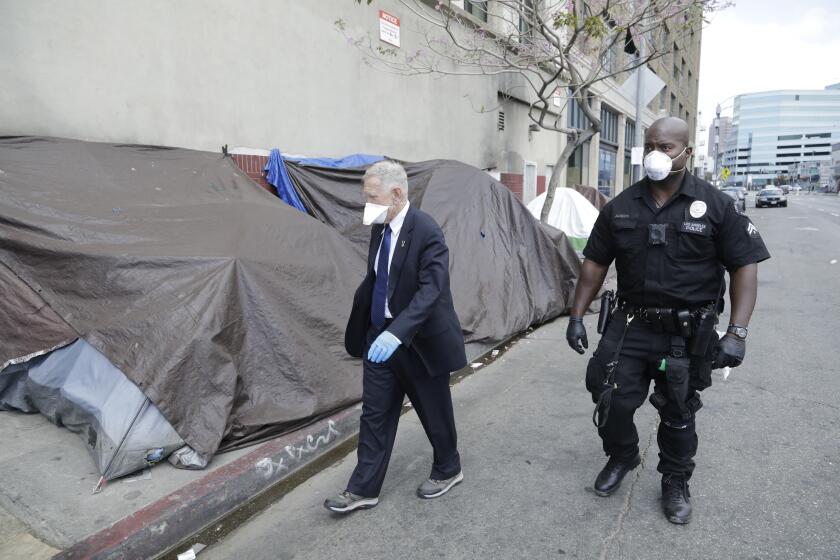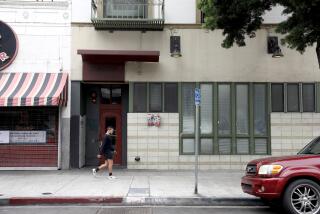Can L.A. really clear homeless people from skid row by October? Here’s what we know

Can Los Angeles really clear the streets of skid row of tents and offer all the people living there shelter by October?
That might be the end result of a bold order issued Tuesday by U.S. District Judge David O. Carter. His action comes at a critical moment for the Los Angeles homeless crisis.
Government officials are putting more money than ever before into finding housing for the region’s homeless population. In the city of L.A. alone, Mayor Eric Garcetti is planning to spend nearly $1 billion to combat homelessness in the coming budget year, tapping huge new sources of state and federal aid and finally ramping up construction of homes for the unhoused.
But the problem is much larger. And as the recent decision to remove an encampment in Echo Park showed, debate about the issue is increasingly polarized.
A federal judge has ordered the city and county of Los Angeles to offer some form of shelter to skid row’s entire homeless population by October.
What does Carter’s order call for?
Carter granted a preliminary injunction sought last week by the plaintiffs in a federal lawsuit, a coalition of business owners, downtown residents and others who have demanded a solution to the city’s homelessness crisis. In the request for an injunction, they asked the judge to order the city and county to offer some form of shelter to skid row’s most vulnerable by August. In response, the judge ordered that:
- The city and county must find single women and unaccompanied children on skid row a place to stay within 90 days.
- Then, officials must help families within 120 days.
- They must offer every homeless person on skid row housing or shelter by Oct. 18.
- The county must provide “support services to all homeless residents who accept the offer of housing,” including placements in “appropriate emergency, interim or permanent housing and treatment services,” through the county’s Department of Mental Health and Department of Public Health. The costs for this work would be split by the city and county, he said.
- “After adequate shelter is offered,” Carter said, he would allow the city to enforce laws that keep streets and sidewalks clear of tents as long as they’re consistent with previous legal rulings that have limited the enforcement of such rules.
What is Carter’s legal reasoning?
Carter outlined historic forms of discrimination that have cut Black people out of housing opportunities, including redlining, segregated systems of assistance during the Great Depression, highway construction that displaced Black families and criminalization that disproportionately affected Black communities.
Racial inequity has continued to color government handling of the crisis, Carter added. For instance, a report presented to county leaders found that Project Roomkey, a program to rent hotel rooms for homeless people, had been disproportionately provided to white people, “exacerbating the risks to a Black population that already disproportionately bears the harmful effects of the city and county’s failure to address homelessness,” Carter wrote.
He concluded that current city and county policies “compound and perpetuate structural racism, threatening the integrity of Black families in Los Angeles and forcing a disproportionate number of Black families to go unhoused.”
Carter expressed frustration at what he suggested was a slow pace of improvement.
“All of the rhetoric, promises, plans and budgeting cannot obscure the shameful reality of this crisis — that year after year, there are more homeless Angelenos, and year after year, more homeless Angelenos die on the streets.”
What has been the reaction to the order?
Skid row has been the center of Los Angeles’ homeless population for decades. It’s been the subject of periodic police crackdowns, but few have considered a wholesale movement of homeless people from the area.
The last homeless count was in January 2020. It found 66,433 homeless people across the county, up nearly 13% from the previous year, the second consecutive double-digit increase. The estimate for the city of L.A. was 41,290, up almost 14% and only slightly less than the previous year’s increase of 16%.
As the Echo Park closure showed, some homeless people might resist leaving their camps downtown, even if offered hotel shelters. There are also financial and legal considerations.
Councilman Mark Ridley-Thomas said city officials are still trying to understand the implications of the court order, including how it would affect existing plans to spend hundreds of millions of dollars on housing for homeless people.
“There’s a lot of questions that we are seeking to sort through,” Ridley-Thomas said Tuesday after the decision was released. “Anytime the court shows up, there is justifiable fear and trembling.” What is clear, he said, is that the court decision stems from the failures of the city and county to seriously address the crisis. “There’s no way to deny that,” he said.
Matthew Umhofer, an attorney representing the plaintiffs in the case, said he and his clients were ecstatic by Carter’s call for action. This was what they wanted when they filed the case in March 2020, he said, and is the reason they sought Carter, who had overseen similar cases in Orange County in recent years, to preside over it.
“This is exactly the kind of aggressive emergency action that we think is necessary on the issue of homelessness in Los Angeles,” Umhofer said. “The city and the county and all the forces of the status quo have had decades to try to fix it and have not. So the moment cries out for extraordinary emergency action, and this is exactly that.”
More to Read
Sign up for Essential California
The most important California stories and recommendations in your inbox every morning.
You may occasionally receive promotional content from the Los Angeles Times.













